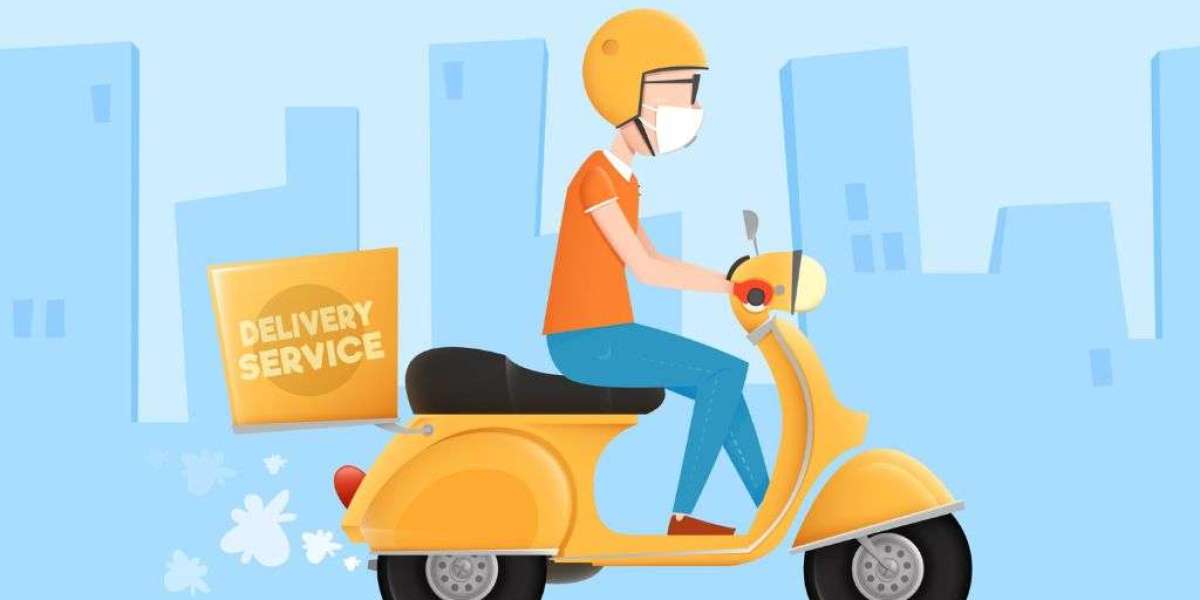The food delivery business has seen tremendous growth over the past few years, fueled by the convenience it offers time-strapped customers and expanding availability of options. Major players in most regions now deliver from hundreds of partner restaurants within minutes. However, even with strong growth, there remains significant potential still untapped in this market. By leveraging new strategies and technologies, food delivery businesses can realize higher order volumes, greater customer stickiness, and stronger unit economics over the long run.
This article outlines 12 key areas that food delivery companies can focus on to unlock this hidden potential. Exploring opportunities like expanding delivery areas, offering alternate products, leveraging partnerships, and optimizing operations can substantially boost order volumes, revenue per customer, and overall profitability. Food startups that proactively pursue these strategies will be best placed to cement their leadership in this developing industry.
1. Expand Delivery Radius
One of the simplest ways food delivery companies can reach more customers is by gradually increasing their delivery radius over time. Currently most players focus deliveries within a radius of 3-4 kms from the source kitchens, which limits their addressable market. With continued technology advancements, deliveries of 10-15 kms are increasingly becoming viable without degrading customer experience.
Leveraging AI and machine learning, routing and navigation systems can optimize longer deliveries to maintain high efficiency. For example, factoring in live traffic conditions ensures a 10 km delivery takes no more than 30-45 minutes on average. This allows reaching many new residential and office clusters currently outside the catchment area. Trial runs with electric vehicles for some long distance orders can further boost sustainability of such expanded operations.
Gradually scaling the delivery radius unlocks a substantial increase in potential customer base and order volumes without the need for opening new cloud kitchens or hubs. It leverages existing infrastructure to drive strong growth at minimal incremental cost.
2. Offer Meal Kits & Ingredients Delivery
While ready-to-eat hot meals remain the core offering, food delivery platforms can leverage their supply chain and fulfillment capabilities to provide other product categories. One such area is delivering pre-portioned meal kits and ingredients to enable home-cooked meals. Offering ingredients, sauces, and easy to follow recipes allows customers to enjoy restaurant quality dishes in the comfort of their homes.
It opens the door for delivering items beyond conventional restaurant menus. Meal kit deliveries also tend to command a higher order value compared to single hot meals. This allows tapping customers who prefer cooking but lack time to shop for every ingredient. With a variety of recipes crafted by professional chefs, it provides a differentiated customer experience versus standalone grocery delivery.
Over time, as fulfilment and packeting capabilities improve, perishables like meats and vegetables can also be reliably delivered. This expands the addressable market further by allowing delivery of fully homemade multi-item meals and special dinner gatherings. Checkout: https://zipprr.com/ubereats-clone/
3. Subscription & Loyalty Programs
A core customer retention strategy for any business is introducing subscription plans for frequent customers. Food delivery platforms can leverage this by enabling monthly or weekly meal subscription packages at discounted prices. Customers get guaranteed deliveries on scheduled days without hassle while companies improve visibility over future revenues.
Loyalty programs where customers earn rewards like discounts or free meals on achieving various order milestones further boost repeat purchases. These can be as simple as earning a flat 5% cashback on total spends every month to gain customer stickiness. Exclusive promo codes, priority deliveries, and custom offers for top loyalty members create a win-win engagement model.
Subscription services not only increase order frequency but also provide a baseline revenue stream for platforms. With 60-70% of customers open to subscriptions according to various surveys, this strategy has big potential to drive higher customer lifetime value in the long run.
4. Corporate Delivery Orders
Beyond residential addresses, food delivery platforms are yet to fully tap the corporate delivery market consisting of office complexes and central business districts. Building partnerships with large employers allows configuring custom subscriptions for office pantry deliveries with options like preset weekly menus, multiple drop points, and flexible timings.
Many companies routinely order lunch or snacks each day which traditional vendors struggle to reliably fulfill at scale. Food delivery platforms are well positioned to cater to such bulk orders with their efficient fulfillment infrastructure already in place for individual deliveries.
The business-to-business segment brings an entirely new set of large volume customers. It allows optimized pricing by leveraging economies of scale. Integrations with corporate expense report systems facilitate easy bill settlements as well. This presents a sizable incremental revenue stream left largely untapped by most major players.
5. Target New Demographics
While millennials currently form the bulk of existing customer base, specifically designing offerings to attract different demographic segments can unlock further uptake. For example, families with young kids are increasingly ordering convenience meals. Understanding their needs, loyalty programs tailored for families like bundled kids' meal discounts or rewards for birthday celebrations can drive their demand.
Similarly, offerings aligned with the preferences of elderly customers living alone such as heart-friendly diet plans and dedicated customer support can cater to their requirements better. College students looking for budget friendly and location-specific late night deliveries represent another sizable untapped market with customized packaging and promotions.
Focusing on a few such niche demographics annually allows careful segmentation of the overall population. It's a smarter approach than broad marketing which may not resonate strongly enough with any group in particular. Platforms that expertly cater to new subgroups will gain large footholds as preferences evolve.
6. Add Special Deals & Discounts
Customer acquisition and retention further improve through targeted promotional schemes and discounts. Flash sales on new product launches or restaurant tie-ups can drum up excitement and trial. Weekly deal bundles combining multiple items into a single discounted pack boosts cart sizes as customers explore more options together rather than individually.
Promo codes for first time users continue being relevant to attract new customers. Standing offers like 15-20% off for subscriptions retain existing ones. Celebrating occasions like festivals and holidays through curated menus and vouchers inspire impulse purchases as well. Platforms need creative deal designs matched to user behavior patterns and evolving lifestyle needs.
With continuously optimized algorithms, they can attract more customers through the front door while keeping existing ones engaged through a thoughtful mix of promotions. It's a fine balance of acquisitions and retentions that platforms need to constantly recalibrate over time.
7. Offer Delivery During Non-Peak Hours
Food delivery volumes currently peak during lunch (12-2pm) and dinner (7-10pm) hours on weekdays with most platforms operating at or near maximum fleet utilization. However, a big missed opportunity lies in the non-peak hours where delivery fleets could potentially be better utilized.
Expanding operations to morning breakfast slots (8-11am) and late evening slots (10pm-12am) taps customers who prefer ordering outside the rush. Platforms may even consider midnight and early morning deliveries (12am-5am) to capture demand from night shift workers and late night revelers craving a hot meal.
Routine optimization of delivery slots based on order patterns in different localities ensures fleet is gainfully deployed round the clock without overloading during specific hours. It boosts overall capacity utilization and order volumes with only marginal increases in fixed operational costs like fleet maintenance and customer support staff.
8. Integrate with Complementary Businesses
Building strategic partnerships allows food delivery platforms to provide customers an enhanced one-stop shopping experience beyond just meals. For instance, integrating local supermarkets onto the platform allows adding items like bread, eggs, beverages to user carts alongside entrees for seamless delivery.
Similarly, pharma chains, florists, bakeries etc. can complement the dinner experience through reliable on-demand deliveries of associated product categories. Rather than competing, such integrations present a collaboration opportunity where both parties benefit through a wider selection on a trusted platform.
It incentivizes impulse accessory purchases along with meals, boosting average order value. Customers enjoy convenience without hassle of multiple log-ins too. As platformification becomes more prominent, diverse complementary partnerships will emerge as a key strategy for retailers and delivery brands alike to stay relevant.
9. Provide Customized Packaging Solutions
While logistics are optimized for speed and safety, packaging sees room for innovation to enhance perceived value. For example, gifting platters for office celebrations, customized bento boxes fitting exact menu items or insulation sleeves with separate compartments for hot/cold dishes increase stickiness through unique solutions.
Premium packaging services allow carefully curating elegant setups for special occasions like anniversaries alongside reliable delivery. It taps the premiumization trend where customers are willing to pay more for aesthetically pleasing, high quality servicing of important events.
Platforms need to carefully study usage patterns to design modular, consumer friendly packaging answering diverse needs from daily hurried cartons to luxury presentation boxes fitting diverse cuisines, budgets and moods. With sustained R&D, packaging itself could emerge as a differentiated revenue stream in the long term.
10. Diversify Payment Options
Having flexible payment choices is crucial for customers especially those on budget or short on upfront cash flows. Options like debit transactions, buy now pay later schemes for interest free EMIs, and digital wallets covering a variety of price points improve accessibility.
Integrating common post-paid billing methods leveraged across domains like telecom allows seamless migration of existing habits to food orders as well. Linking reward points from separate loyalty programs presents another opportunity to increase average order value through discounted redemptions.
Platforms need to offer payment choices reflecting how different age-groups currently transact elsewhere rather than pushing proprietary wallets alone. This builds trust for familiar options while exposing new customers to digital conveniences. As savings from diversified funding sources get passed partially to users through competitive pricing, demand further spikes up creating a positive cycle.
11. Customer Engagement Tools
Acquiring new customers and onboarding them efficiently is crucial for growth. However, sustained engagement becomes even more important for long-term success. Food delivery platforms leverage technology like push notifications, personalized emails and in-app messages to regularly feature trending menus, upcoming deals and exclusive offers for top loyalty members.
Strategic campaigns around user events like birthdays, festivals draw repeat purchases through emotional connect. Proactive outreach on past order patterns through automated chatbots ensures any queries are promptly addressed to improve retention. Behavioral tagging segments audiences based on past activity for precision targeting future campaigns most likely to resonate.
Continuous optimization of engagement tools becomes paramount as customer attention spans reduce. platforms need dynamic split testing of various creative formats to identify the right nudges inspiring unplanned impulse purchases. Regular engagement translates directly to increased order frequency — a Win-Win for both parties in the mature growth phase.
12. Cloud Kitchen Network
With rising real estate costs, setting up large centralized commercial kitchens becomes cost-prohibitive for food delivery startups to serve newer pockets. The cloud kitchen model addresses this challenge through shared commission kitchen spaces available for rent at lower individual investment.
Multiple brands operate out of a single such facility with dedicated production zones managed through integrated technology. Careful location scouting factors demand patterns to establish hub-and-spoke supply networks radiating from centralized cloud kitchen zones.
Fast scaling becomes feasible through an asset-light model as startups focus on core differentiation versus infrastructure. Regional expansion happens faster as kitchen facility availability becomes ubiquitous versus traditional dine-in restaurants.
Even established quick service brands now leverage these shared facilities for swift market penetration at lower capital outlay. Empowered by the sharing economy concept, cloud kitchens have emerged as the new blueprint to power food delivery ecosystems nationwide.
Conclusion
In this article we explored multiple strategies focussing on both customer acquisition and retention that food delivery platforms have barely scratched the surface of. While convenient delivery of hot meals will remain core, diversifying offerings, optimizing operations around user needs and leveraging partnerships present a massive growth runway ahead.
Success lies in continuous experimentation with innovative engagement and monetization models. Early adopters proactively testing new concepts will build capabilities necessary to cement leadership in this evolving industry. Those embracing flexibility and disruption will emerge winners in the trillion-dollar global food delivery market of tomorrow.







